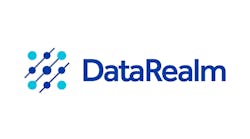Adjustable speed AC drives are mainly made up of two power sections, i.e., a rectifier section and an inverter section. The AC source voltage is converted into a DC voltage by the rectifier circuit, and then the DC voltage is converted again into a PWM controlled variable voltage AC output by the inverter circuit. The six-diode bridge rectifier is most widely used as an AC-to-DC converter. This diode rectifier has a nonlinear (i.e. non-sinusoidal) load characteristic causing harmonic currents flow into the power source and results in line voltage distortion. Excessive harmonics in a power source raise many practical problems such as;
- The rms current increase and input power factor reduction
- Overheating of grid-connected motors, cables, transformers, and other distribution equipment
- Resonating and harmonic heating of the power factor correction capacitors
- Nuisance tripping of the thermal circuit breakers
- Malfunction of PLCs, computers, and other harmonics sensitive equipment.
The Yaskawa E7,F7,G7, and P7-series drives above 30HP have a built-in DC link choke as a standard easily mitigating input current harmonics. In case of six-diode bridge rectifier, the input current Total Harmonic Distortion (THD) is approximately 40% at a full load condition. The harmonic currents can be further reduced to about 30% with the addition of input AC reactors in combination with a DC link choke. For further harmonics reduction, multipulse rectifier topologies are good practical solutions, which reduce input current harmonics to levels below 10%. This paper introduces general features and advantages of Yaskawa's multi-pulse solutions that include 12-pulse and 18-pulse rectifier topologies.



